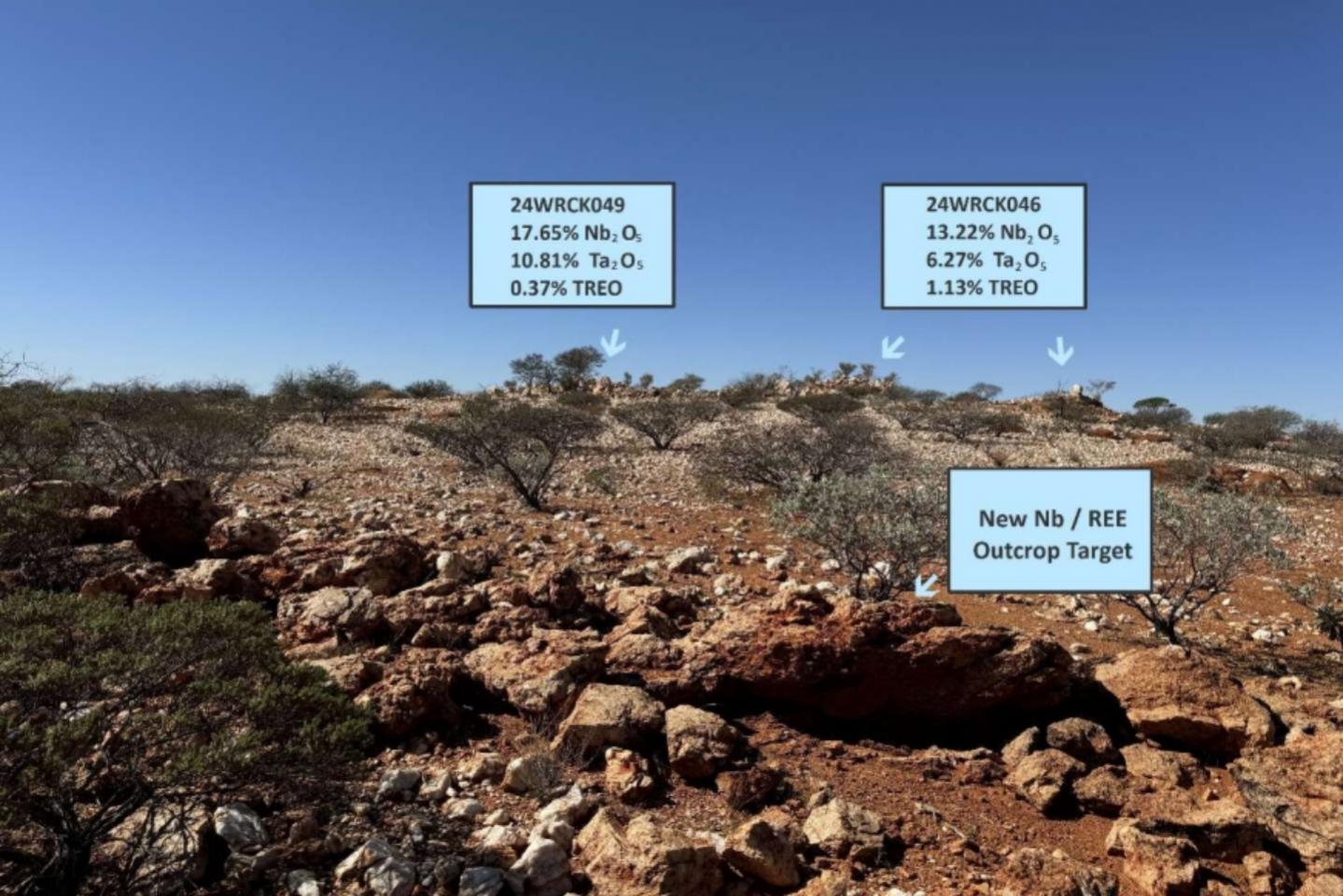Reach Resources has identified new high-priority targets rich in niobium and rare earths after nailing down a comprehensive mapping and sampling campaign at its Wabli Creek project in Western Australia’s Gascoyne region. The company plans to use the results gleaned from its latest work to plan a drilling program that it expects to roll out towards the end of this year.

Reach Resources has identified new high-priority targets rich in niobium and rare earths after nailing down a comprehensive mapping and sampling campaign at its Wabli Creek project in Western Australia’s Gascoyne region.
The company plans to use the results gleaned from its latest work to plan a drilling program that it expects to roll out towards the end of this year.
The recently-completed survey focused on the crossover of strong geochemical targets and the boundaries of a prominent intrusive feature, which Reach believes are the host source of the enriched niobium-yttrium-tantalum-titanium rare earths mineralisation at Wabli Creek. The mapping has identified three distinct carbonatite-style structures that are frequently correlated with dykes, pegmatites and granites and they are all promising future exploration targets.
The program collected 78 rock-chip samples and hand specimens that have now been sent for further laboratory analysis and a study of the rock history at the site. Results from the analysis will play an important part of the planning of the drilling program.
Reach Resources chief executive officer Jeremy Bower said: “Having obtained heritage clearance, we are another step closer to our maiden drill campaign. Our final decision point will come with the return of assays, petrology and the detailed mapping which will refine our initial targets for a drilling program.”
Bower says the company has already started working with the resident pastoralist at Wabli Creek and the local Wajarri people as it ramps up its drilling plans.
Three years ago, Reach revealed the discovery of highly-elevated niobium levels within rock-chip samples that showed concentrations as high as 32 per cent niobium pentoxide. The samples were taken 500m from the company’s current area of interest and it has since collected additional high-grade samples.
However, it was only during the geophysical and rock-chip program in March that the discovery of an ovoid intrusive structure, represented by a magnetic low, was confirmed. The company now believes the primary source of mineralisation lies in the margins of that structure.
The samples that came back at that time from in-situ and bedrock sources threw even more light on the project’s potential, with results of 1.13 per cent total rare earth oxides (TREO) including 13.22 per cent niobium pentoxide, and 0.37 per cent TREO with a 17.65 per cent niobium pentoxide assemblage.
Aside from its interest in the Wabli Creek project, Reach has recently been able to farm out its much-vaunted Morrissey Hill and Camel Hill lithium project – 20km to the north of Wabli Creek – to ASX-listed Delta Lithium for $3.2 million in cash and the right to earn 51 per cent of the project for $3 million in expenditure in the next two years. The farm-out of a further 29 per cent can be triggered by Delta for an additional $6 million in expenditure.
It leaves Reach with 20 per cent that can then be sold to Delta for $10 million if the joint venture (JV) defines a resource estimate of more than 7.5 million tonnes grading 0.8 per cent.
The upshot of all the recent corporate activity – and a $2.5 million capital raising – is that Reach has refilled its coffers to the tune of $6 million. Investors are now likely to be keeping their eyes peeled for any news that confirms the kick-off date of an extensive drilling program aimed at revealing Wabli Creek’s hidden treasures.
Is your ASX-listed company doing something interesting? Contact: matt.birney@businessnews.com.au















